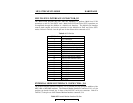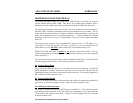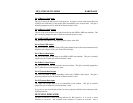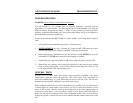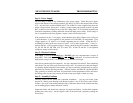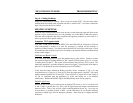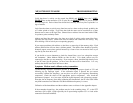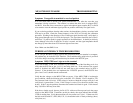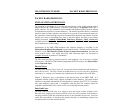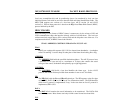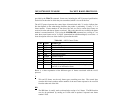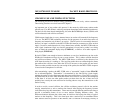
MFJ-1278B MULTI-MODE TROUBLESHOOTING
Symptom: Uncopyable transmitted or received packets
If no one seems able to decode your packet transmissions, it is often the case that your
transmitter is being overdriven. The solution is to reduce the drive level via trimpots R157
and R158. Note that direct connection to typical microphone inputs requires R157 or R158
to be turned to near the minimum signal position to produce sufficiently low signal levels.
If you are having problems hearing other stations, the demodulator circuitry associated with
U20 may be at fault. Check the center frequency of the VCO in U20 using the calibration
procedure. Working in the direction of flow of the input signal from the radio, verify that it is
being passed through to pin 2 of U20, the input pin. The signal there should be above 50 mV
and below 3 V peak-to-peak for proper operation of the demodulator. It should be relatively
clean, although a few tens of millivolts of noise is normal, and the signal amplitude should
not change by more than about 25% between high and low tones.
Note: Make sure that JMP 8 is on.
TERMINAL INTERFACE TROUBLESHOOTING
If you can't get the MFJ-1278B to sign on and accept data from your terminal or computer,
the problem may be in the RS-232C interface. The troubleshooting guide below is provided
as an aid to help in resolving problems that may be related to the RS-232C port.
Symptom: MFJ-1278B won't sign on to the terminal
If you find the MFJ-1278B won't send data to your terminal, one of the first things to do is to
verify that the RTS line at pin 4 of J1 is not being held low. If the software flow control
option is disabled, the MFJ-1278B will not send data to the terminal unless its RTS is
asserted. If the terminal does not implement the RTS/CTS protocol, the RTS/CTS lines
(pins 4 and 5 on J1) should remain unconnected.
Verify that the voltages on the MFJ-1278B are correct. If the MFJ-1278B is in otherwise
good condition, check the following pins on the SIO, U21 (Z8440). Pin 23 should be TTL
low (between 0 and +0.8 volts). If this voltage is incorrect, check the voltage at U9 pin 3 and
verify that it is greater than +3 volts. If this voltage is correct, U9 or the traces around it may
be bad. If this is not the problem, disconnect the terminal and check it again. If this doesn't
help, U9, R20 or R22 may be at fault.
If the above checks are ok, observe pin 26 of U21 with an oscilloscope and cycle the power
switch on the MFJ-1278B. Transitions on this pin shortly after reset indicate that the MFJ-
1278B is sending data. Verify that transitions are also present on U3 pin 1. If these tests fail,
the fault could be with U13, R25, R26, U21, J1, the attached cable or faulty soldering (shorts,
cold joints, etc.)



